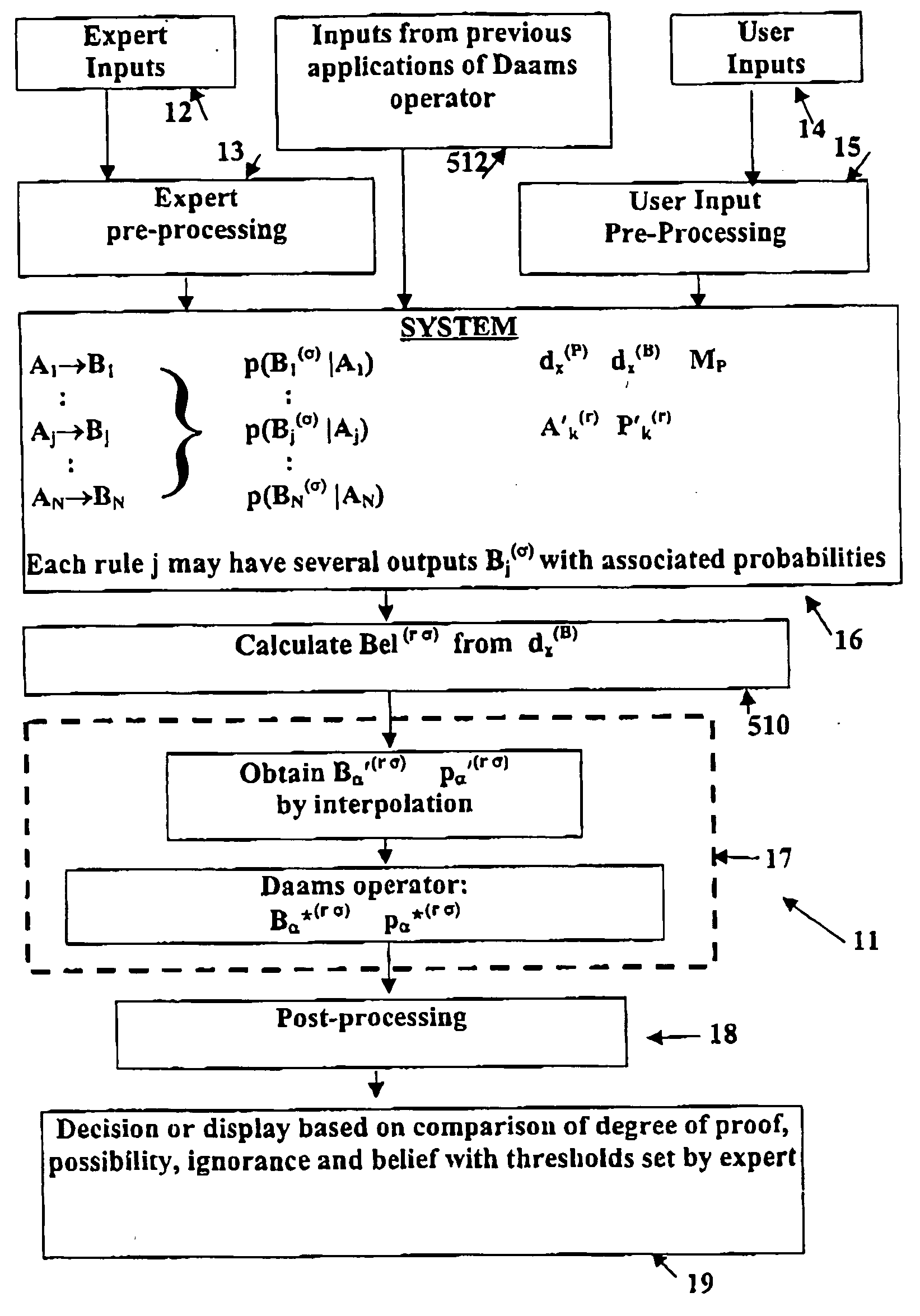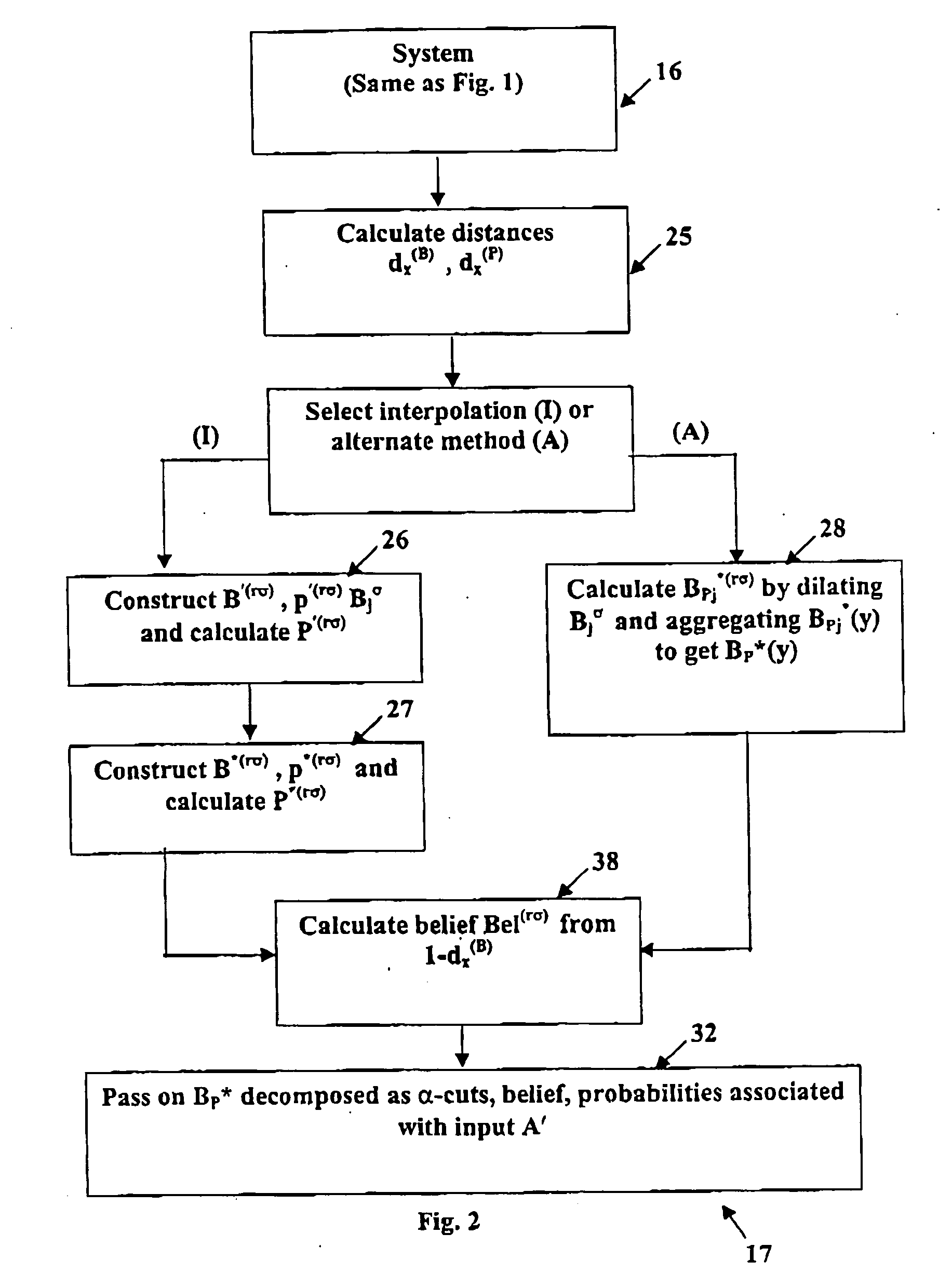Possibilistic expert systems and process control utilizing fuzzy logic
a fuzzy logic and expert system technology, applied in the field of fuzzy expert system and process control, can solve the problems of increasing the uncertainty of the range of possible outputs, not spreading the envelope of possibility at all, and limiting the decision-making capabilities of existing fuzzy logic systems
- Summary
- Abstract
- Description
- Claims
- Application Information
AI Technical Summary
Problems solved by technology
Method used
Image
Examples
example 1
Suppose
(1) There is a chain with n rules, in which the inputs and outputs match exactly for each rule in the chain, e.g. A→P, P→Q, Q→R, . . . , T→U, U→B. (2) MP is linear (see FIG. 32a), and the same MP is used for each rule 56 in the chain.
Then dxeff=dx(1m) and dyeff=du(1m) where dx=dx(A, A′) and dy=dy(B, B′), where n is the number of rules in the chain 56.
example 2
Suppose
(1) There is a chain 56 of length two in which inputs and outputs match exactly, e.g. A→P, P→B. (2) MP is linear and is different for the two rules because of different sensitivities of the output to a change in the input, i.e. MP1 is used for A→P and MP2 is used for P→B. (3) A function g(S) is defined such that MP2(g(S))=MP1(S), where S=(dy / dx). (Since MP is linear, it is a function only of (dy / dx).) (4) g(S) is either nondecreasing for all S[0, ∞) or nonincreasing for all S[0, ∞). This condition is used to restrict the occurrence of multiple roots in the implicit equation below.
Then (dyeff / dxeff)=(dyg / dx(A, A′)) where dyg is the solution of (dyg(dx / (A, A′))=g(dy(B, B′) / dyg).
example 3
Suppose
(1) There is a chain 56 of length two in which inputs and outputs match exactly, e.g. A→P, P→B. (2) MP is nonlinear and identical for both rules. Then the effective distances dxeff, yyeff, are no longer calculated from simple geometrical formulas. They can however be found through numerical methods known in the art and will depend on the particular MP chosen by the expert of the system 11. The type of numerical method used may also be influenced by the shapes of A, P, B and where dx(A,A) and dy(B,B) lie in the dx-dy plane, dependent upon the chosen application for the system 11.
PUM
 Login to View More
Login to View More Abstract
Description
Claims
Application Information
 Login to View More
Login to View More - R&D
- Intellectual Property
- Life Sciences
- Materials
- Tech Scout
- Unparalleled Data Quality
- Higher Quality Content
- 60% Fewer Hallucinations
Browse by: Latest US Patents, China's latest patents, Technical Efficacy Thesaurus, Application Domain, Technology Topic, Popular Technical Reports.
© 2025 PatSnap. All rights reserved.Legal|Privacy policy|Modern Slavery Act Transparency Statement|Sitemap|About US| Contact US: help@patsnap.com



